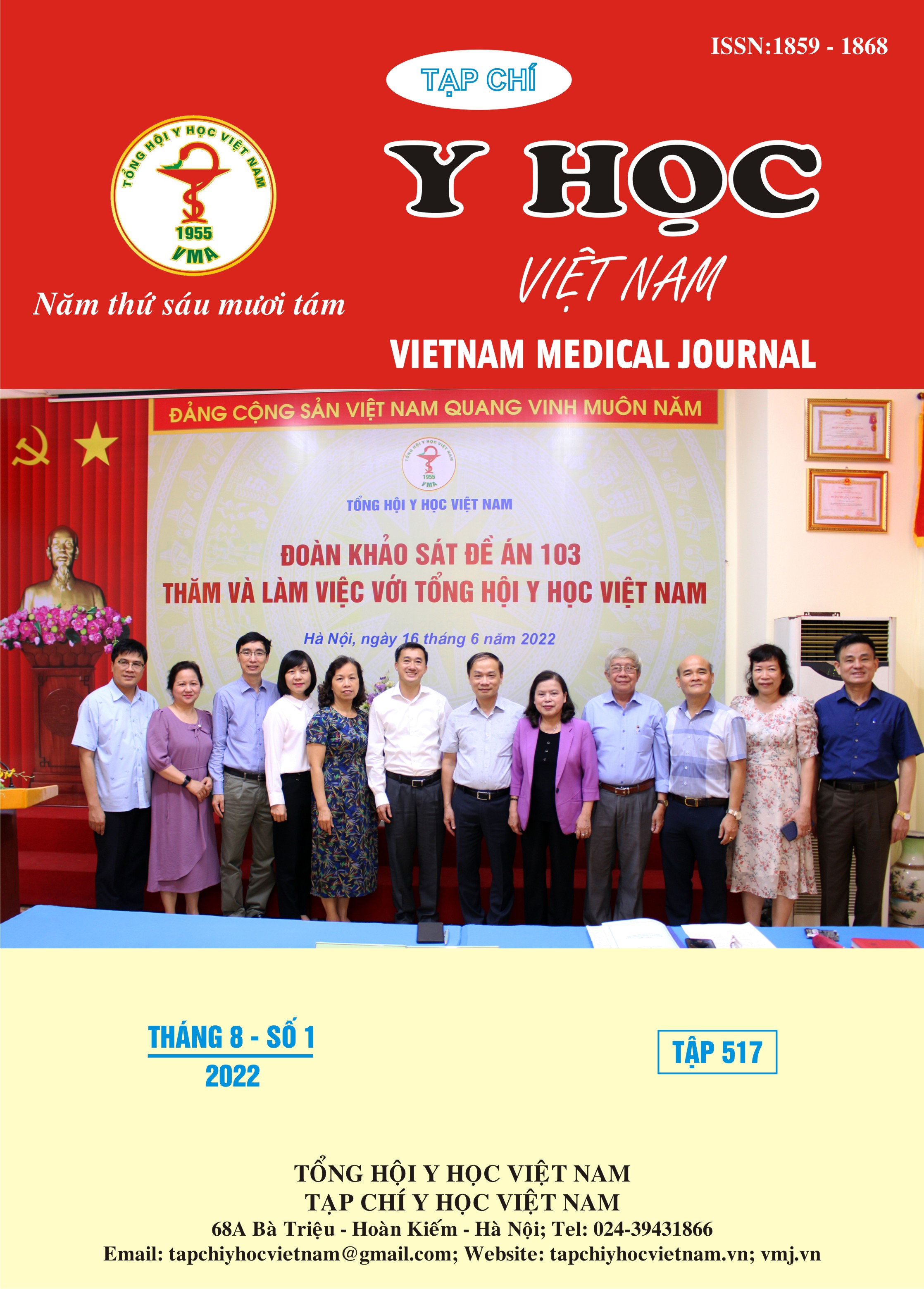ĐẶC ĐIỂM LÂM SÀNG VÀ CẬN LÂM SÀNG Ở BỆNH NHÂN TRÀN DỊCH MÀNG NGOÀI TIM
Nội dung chính của bài viết
Tóm tắt
Đặt vấn đề: Tràn dịch màng ngoài tim là một bệnh lý tim mạch thường gặp trên lâm sàng, có thể xảy ra ở mọi lứa tuổi và chủng tộc khác nhau. Biểu hiện lâm sàng của tràn dịch màng ngoài tim rất thay đổi, từ tràn dịch mức độ nhẹ không triệu chứng đến chèn ép tim cấp. Các dữ liệu liên quan đặc điểm lâm sàng và cận lâm sàng của bệnh lý tràn dịch màng ngoài tim tại Việt Nam còn hạn chế. Mục tiêu: Mô tả đặc điểm lâm sàng và cận lâm sàng ở bệnh nhân bị tràn dịch màng ngoài tim tại bệnh viện Chợ Rẫy. Đối tượng và phương pháp nghiên cứu: Đây là nghiên cứu cắt ngang mô tả, hồi cứu dựa trên hồ sơ. Nghiên cứu gồm 248 bệnh nhân được chẩn đoán xác định tràn dịch màng ngoài tim điều trị tại Bệnh viện Chợ Rẫy trong 10 năm từ 2010 – 2020. Kết quả: Trong 10 năm, có 285 bệnh nhân tràn dịch màng ngoài tim, trong đó 248 bệnh nhân thoả tiêu chuẩn được đưa vào nghiên cứu. Tuổi trung bình của dân số nghiên cứu là 52,3 ± 18, tỉ lệ nam:nữ là 1,61:1. Khó thở là triệu chứng thường gặp nhất (77%), tiếp theo là đau ngực (11%) và sốt (4%). Có 7,7% bệnh nhân có tụt huyết áp lúc nhập viện, tĩnh mạch cổ nổi là 11,3%, tiếng tim mờ là 18,6% và mạch nghịch là 1,6%. Tràn dịch màng ngoài tim toàn thể chiếm 95,2%, tràn dịch lượng nhiều chiếm 77,4% và 23,8% bệnh nhân có biểu hiện chèn ép tim trên siêu âm tim. Bất thường trên điện tâm đồ có 41,5% có điện thế thấp, 2% có so le điện thế. Có 248 bệnh nhân được thực hiện chọc dịch màng tim, kết quả 98% là dịch tiết. Kết quả tế bào học dịch màng ngoài tim với sự hiện diện của tế bào ác tính chiếm 12,7%. Cấy dịch màng ngoài tim dương tính ở 6/232 mẫu, 3 mẫu cấy dương với Staphylococcus aureus. Kết luận: Kết quả nghiên cứu cho thấy triệu chứng thường gặp nhất của tràn dịch màng ngoài tim là khó thở. Tiếng tim mờ, tụt huyết áp và tĩnh mạch cổ nổi ít được ghi nhận trong nghiên cứu. Hầu hết tràn dịch màng ngoài tim là toàn thể, lượng nhiều trên siêu âm tim. Dịch màng ngoài tim đa số là dịch tiết, tỉ lệ cấy dương rất thấp, tác nhân được ghi nhận nhiều nhất là Staphylococcus aureus.
Chi tiết bài viết
Từ khóa
Tràn dịch màng ngoài tim, khó thở, chèn ép tim
Tài liệu tham khảo
2. Albugami S, Al-Husayni F, AlMalki A, et al. Etiology of Pericardial Effusion and Outcomes Post Pericardiocentesis in the Western Region of Saudi Arabia: A Single-center Experience. Cureus. 2020; 12(1).
3. Nguyễn Thị Ngọc Thủy. Tràn dịch màng tim bệnh lý có chèn ép tim chẩn đoán và kết quả điều trị mở cửa sổ màng tim. Tạp chí Y học Thành phố Hồ Chí Minh. 2008;12(1).
4. Light RW, Macgregor MI, Luchsinger PC, et al. Pleural effusions: the diagnostic separation of transudates and exudates. Ann Intern Med. 1972;77(4):507-513.
5. Nguyễn Viết Đăng Quang. Đánh giá kết quả sớm phẫu thuật mở cửa sổ màng tim trong điều trị tràn dịch màng tim ác tính. Tạp chí Y học Thành phố Hồ Chí Minh. 2010;14(1).
6. McGinley A, Gribbin G. A delayed diagnosis of cardiac tamponade. BMJ Case Rep. 2013; 2013: bcr2012007255.
7. Văn Minh Trí. Kết quả điều trị ngoại khoa tràn dịch màng tim. Tạp chí Y học Thành phố Hồ Chí Minh. 2007;1(11).
8. Ma W, Liu J, Zeng Y, et al. Causes of moderate to large pericardial effusion requiring pericardiocentesis in 140 Han Chinese patients. Herz. 2012; 37(2):183-187.


